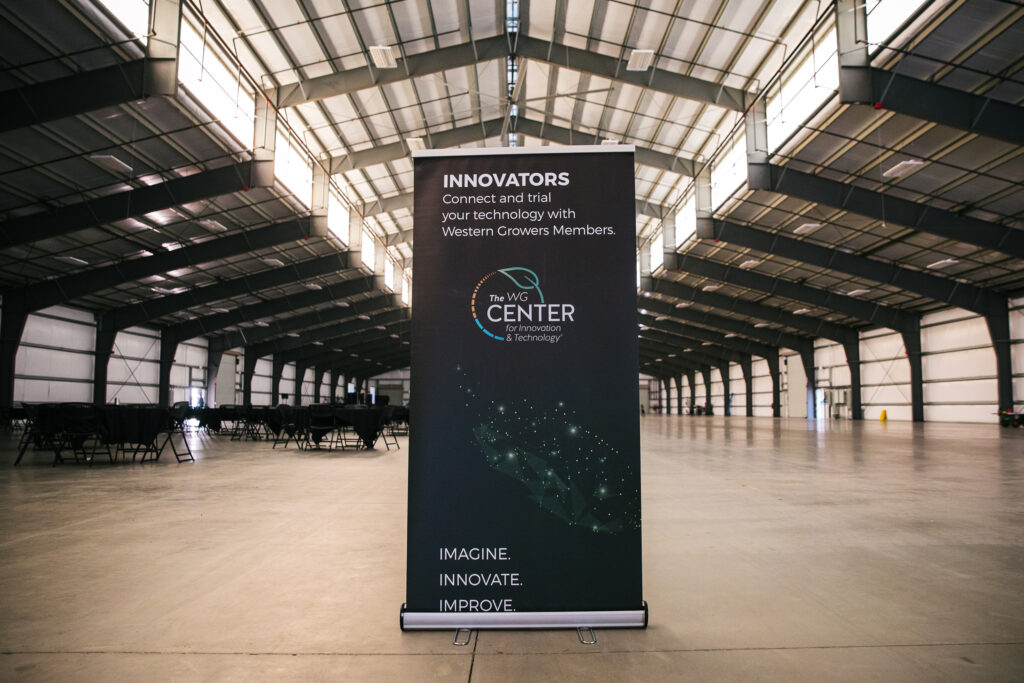By Walt Duflock, Vice President, Innovation
Getting all the food planted by growers harvested remains a challenge, particularly in California as labor gets harder to find and more expensive due to increased regulation around minimum wage, overtime, break rules, and payment for non-productive time. Western Growers launched the Global Harvest Automation Initiative to help harvest robot startups get to market and scale faster.
For startups, WG is building a technology stack to help startups plug into technology partners easier. We are also putting together a startup cohort—selected with industry input—that will get strategy, go-to market support, field trials, and case studies.
For growers, WG is building an annual impact analysis to determine how much impact the automation startups are actually delivering and a startup traction report to help growers identify startups by crop and which are early stage, in testing, or in production and starting to scale.
The key effort for Q2 is the technology stack. Version 1.0 of the stack is being built by a project manager and a team of subject matter experts (SMEs) in ag and robotics. SMEs are from various industries and organizations including:
- precision ag companies (Trimble, Bosch);
- original equipment manufacturers and platform companies (Ramsay Highlander, Oxbow, and Spudnik);
- AgTech engineering companies (Milano Technical Group, All Phase Agriculture, Red Rooster Engineering, and NWFM LLC); and
- WG members that are among the world’s largest and best farming operators at adopting new technologies (Grimmway Farms, Turlock Fruit Company, Church Brothers Farms, Superfresh Growers, and Illume Agriculture).
This group of SMEs brings experience and passion to the harvest automation challenge, with many having decades of experience in this space. Their singular focus for Q2 is to help startups who want to integrate with partners more and develop less. Together, the group will build a set of documented interfaces so startups can connect to tractor manufacturers like John Deere, sensor manufacturers like Bosch, navigation equipment providers like Trimble, and other manufacturing partners. At the end of Q2, we will publish this set of interface documentation.
Once version 1.0 of the tech stack is complete, the real work begins – getting the stack used by startups to help accelerate their development and go-to market. The key enabler here will be systems integration (SI). WG will work with partners to provide SI work for the startups that the industry identified as furthest along and/or most promising with market traction. This systems integration work will include a full review of each cohort startup’s product roadmap and helping each startup develop a strategy for which components they want to use partners for and which components they want to build in-house. Then the startups build the stack architecture into their product roadmap. This gets their harvest automation solution to a point where the focus shifts to the business strategy of getting the solution into market faster.
At this point, WG will help the startups by providing introductions to channel partners in regions they are targeting. WG has a global network of partners that can help startups by providing trusted advisor status with local growers. Startups should provide a direct sales option for customers that want to buy that way, but most should also offer sales through channel partners. In addition, most of them should expect to offer both product (i.e., grower buys the harvest robot) and as-a-service (i.e., grower pays a usage-based subscription—usually per acre or per harvest yield metric) pricing options.
By the end of 2021, WG will achieve the following milestones:
- Tech Stack 1.0 launched (Q2)
- Systems integration efforts and business go-to market strategy launched (Q3)
- Roadmap for Tech Stack 2.0 released (Q4)
- Impact analysis and market traction released (Q4)





